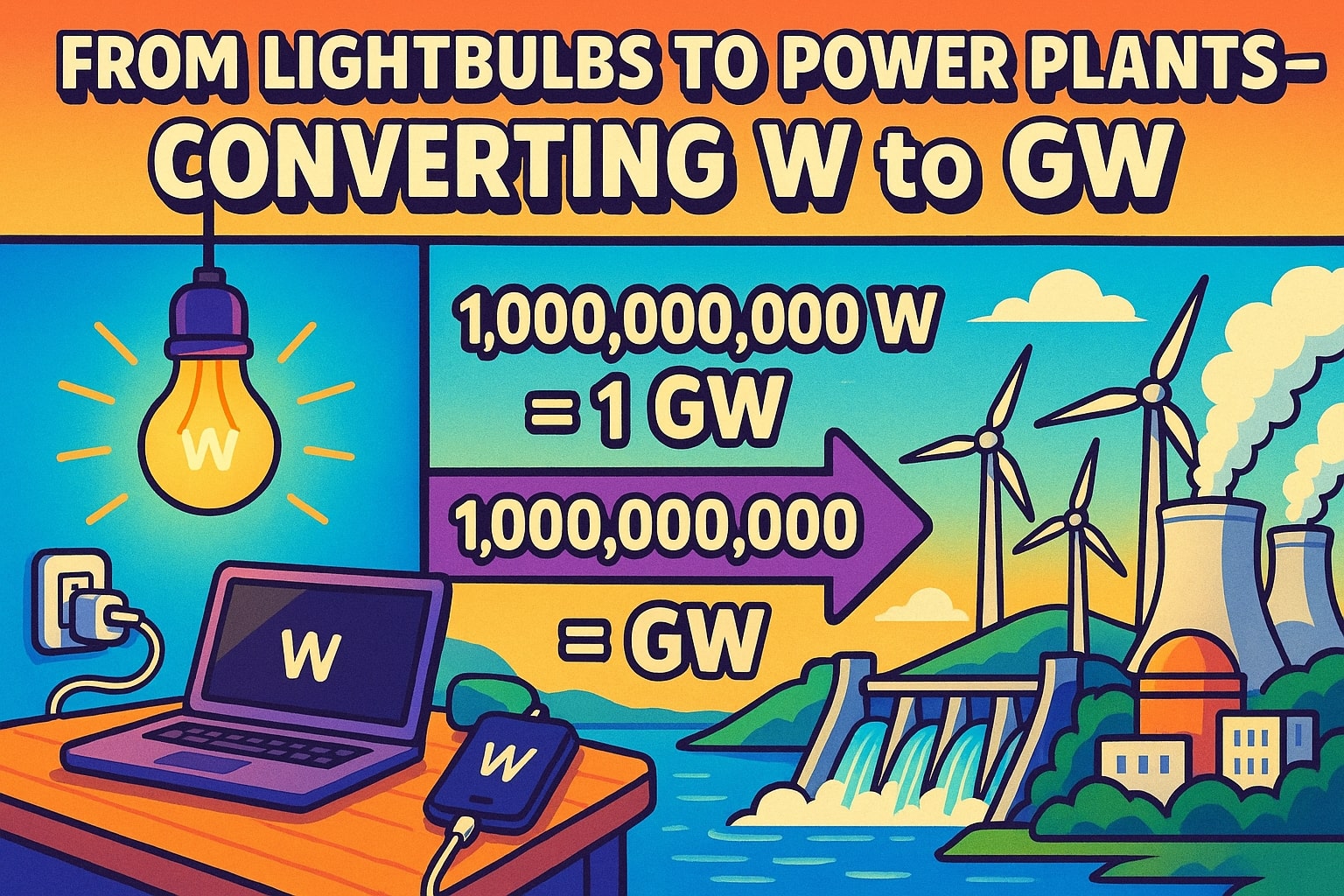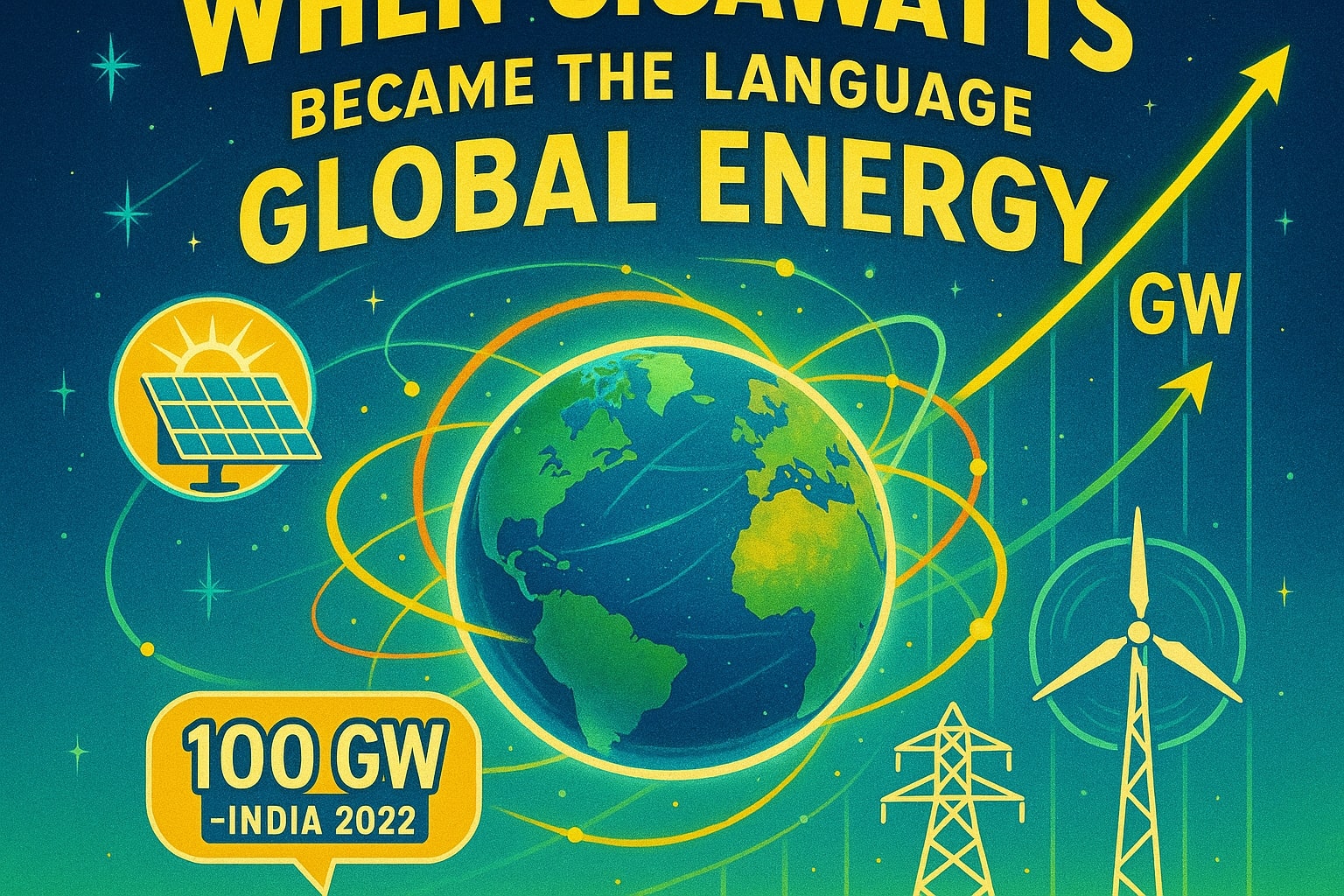Watt to Gigawatt – How to convert W to GW
When you need to convert watt to gigawatt, you’re scaling between two vastly different measures of power. Watts measure the energy output of everything from lightbulbs to laptops, while gigawatts are used for power plants, national grids, and massive energy projects. Despite the difference in scale, the math is straightforward thanks to the metric system. Here’s how to handle the conversion, where these units are used, and some fascinating facts about just how big a gigawatt really is.

What is a watt (W)?
A watt is the SI unit of power, equal to one joule per second. It represents the rate at which energy is used or produced.
Watts are used in nearly every aspect of modern life: your phone charger might use 20 W, a microwave might draw 1,000 W, and a small household solar panel can produce 300–400 W on a sunny day. The unit is named after James Watt, the Scottish engineer whose work on steam engines helped drive the Industrial Revolution.
What is a gigawatt (GW)?
A gigawatt is a much larger unit, equal to 1 billion watts (1 × 10⁹ W). It’s typically used for large-scale power generation and distribution, like the capacity of hydroelectric dams, wind farms, and nuclear plants.
For example, the Hoover Dam has a generating capacity of about 2 GW, enough to supply millions of homes. Gigawatts are also a key metric in tracking national energy production and global renewable energy targets.
How to convert watt to gigawatt
Since both units are metric, the conversion is simple:
1 gigawatt = 1,000,000,000 watts (1 GW = 10⁹ W)
To convert:
Gigawatts (GW) = Watts (W) ÷ 1,000,000,000
Example: A large offshore wind farm produces 4,500,000,000 W:
4,500,000,000 ÷ 1,000,000,000 = 4.5 GW
Want the result instantly? Use our Power Converter or check more Conversion tools for quick, accurate results.
Did you know?
-
Global electricity demand: According to the International Energy Agency (IEA), the world’s average electricity demand hovers around 28,000 GW at any moment, a number that grows every year with industrialization and population.
-
Renewable milestones: The Three Gorges Dam in China, one of the largest hydroelectric plants, has a generating capacity of 22.5 GW, producing over 100 terawatt-hours annually.
-
Pop culture note: In the movie Back to the Future (1985), Doc Brown famously says the DeLorean time machine needs 1.21 gigawatts to travel through time — a nod to the scale of power typically reserved for large power plants.
-
Solar expansion: In 2023, global solar installations added over 250 GW of capacity, enough to power hundreds of millions of homes, showing just how quickly renewable power is scaling.
When Gigawatts Became a Global Benchmark
In the early 2000s, as nations began setting renewable energy targets, the gigawatt became the universal benchmark for energy infrastructure. According to Bloomberg New Energy Finance, governments started reporting solar and wind capacity in gigawatts rather than megawatts to reflect the enormous growth of these industries.
For instance, India’s National Solar Mission, launched in 2010, set a target of 100 GW of solar capacity by 2022. By using gigawatts, planners could better communicate the scale of national efforts, secure international investment, and track progress alongside global energy benchmarks.

Bringing It All Together
Converting watt to gigawatt is as simple as dividing by 1 billion. While watts measure the energy behind household gadgets, gigawatts help us quantify the power behind massive energy projects and national grids. Understanding how they relate gives context to everything from your electric bill to global renewable goals.
For fast and reliable calculations, try our Power Converter or explore other Conversion tools to make any power conversion effortless.

